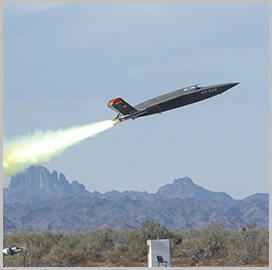Executive Mosaic’s GovCon Index increased by 1.36% last week, ending with an average of $5,366.84.
GovCon Index tracks and displays real-time stock market data on 30 major government contracting enterprises. Users can leverage this information to examine the performance of each individual company and assess the overall state of today’s GovCon marketplace.
Last week’s top gainer was Aerovironment, which grew by 8.27%. Jacobs (+4.43%) and Mercury Systems (+4.27%) were second and third, respectively. Accenture Federal Services recorded an increase of 3.85%, taking fourth place, and Parsons (+3.61%) came in fifth.
GovCon Index started last week off strong, rising by 1.31% on Monday. Despite losses on Tuesday and Wednesday, gains on Thursday and Friday locked in a second consecutive week of growth.
Check out last week’s market reports to get even more information on daily GovCon Index performance, and visit the GovCon Index website to view the complete list of tracked organizations.












